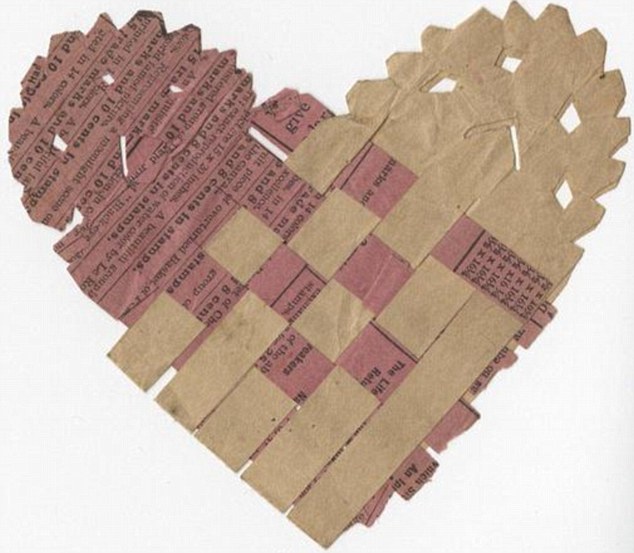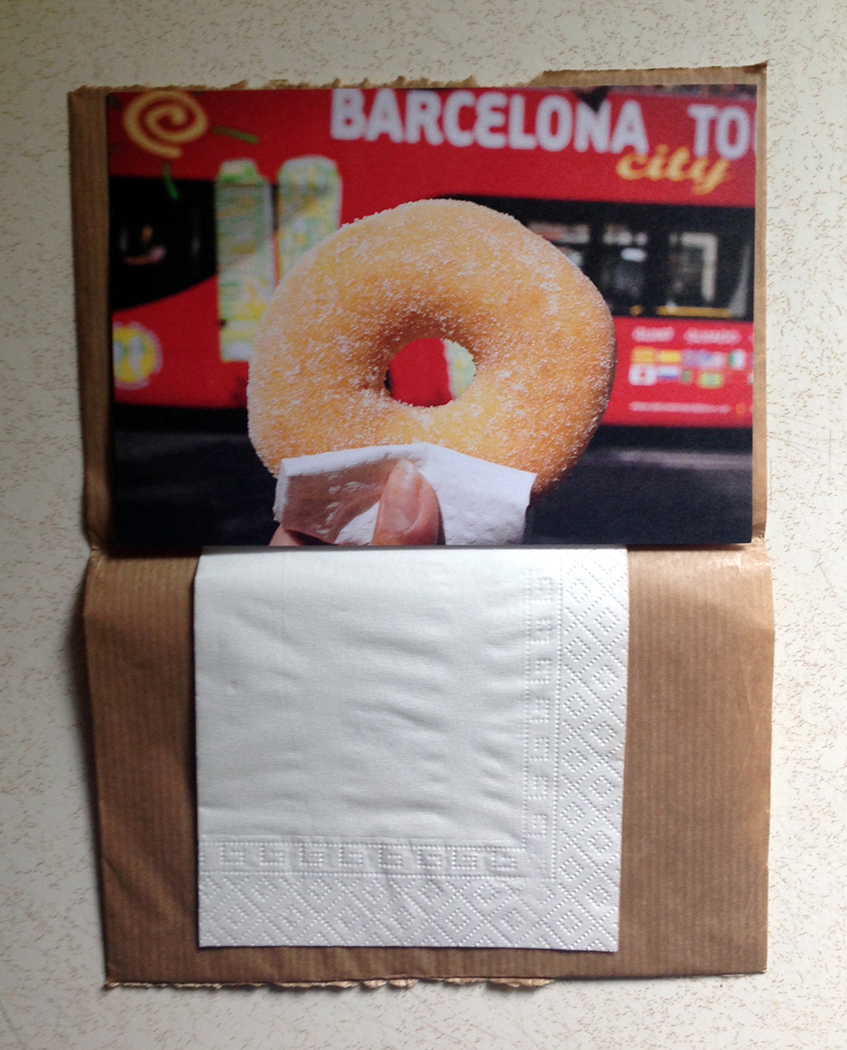Without fail, I am always excited to see Maria Daniela Quirós's name appear on the address exchange list. Her postcards often feature an act of participation from the viewer or are pointed observations of the everyday. Last June, I interviewed Maria from her home in San Francisco. Life happened in its unexpected ways and her responses were buried so deeply in my inbox, it was not until this week that I am able to publish them. Without further ado (and unnecessary excuses), the interview!
Image by Maria Daniela Quirós
Jacinda Russell: Can you briefly describe your personal history as it directly relates to the concepts behind the mail art you send.
Maria Daniela Quirós: I am originally from Venezuela. I recently moved to San Francisco, CA, but had been living the last 10 years between Paris and Barcelona. Through these years I’ve worked as a graphic designer, studied photography and also worked as a freelance photographer. Since 2010 I’ve been developing my personal projects, including being an active member of the Postcard Collective.
Image by Maria Daniela Quirós
JR: The first "card" I received from you looked like a small poster with nine images on the front and a large photograph on the back from the Analog Photo Journal Series. Postcards that followed paid close attention to presentation whether or not they are sealed in two envelopes taped together or encased within a napkin and paper bag. What is the role that presentation plays in the creation of your cards? Do you conceive of the end product first and work your way backwards?
Image by Maria Daniela Quirós
MDQ: Yes, presentation has always played an important role in my projects. I consider it to be one of the essential parts of the narrative, and the starting point of the viewer’s experience. It is as essential as the creation of the image. I think my graphic design background has played an important role in my visual communication choices. The work I’ve done for print publications has taught me about print materials and how to apply them to help communicate an idea. Normally I have an idea of the end product at the beginning, but usually it is pretty loose and evolves into something related but different. I constantly try to imagine the postcard receiver and the whole experience: receiving it, opening it, unfolding it, discovering the layers and finally, the message inside… And that’s when the best ideas come!
Image by Maria Daniela Quirós
JR: Often you request that the audience participate in order to complete the experience. Once you asked us to interact with a map on a given website and another time, a question as simple as "what do you see?", which requires no correspondence with you, appeared on the back. My favorite card was the doughnut from the theme "Exchange" which requested an image in return via email, Twitter or Instagram. How often do people respond and what was the most surprising result?
Image by Jacinda Russell
MDQ: When I invite the audience to be part of the experience, normally a group of people respond. It’s so exciting when the postcards are sent and the responses start to arrive! I really enjoyed seeing the evolution of the map (Mapping the postcards) and learning about everyone’s favorite things (Donut postcard). For the “Exchange” theme only a small group answered back, but their responses were awesome!!! This postcard exchange was very rewarding because it helped me to create a long distance bond with some of the participants. I loved the things they exchanged with me. Of course I can share a few examples! Cassidy shared with me a pizza fresh out the oven from a place in Tucson called Marco’s. I also had a lovely reply from Caitlin, who shared with me a sniff of the wheatgrass she grew in the summer time for her preschool program.
Photograph by Cat Lynch
JR: Your artwork, as seen on your website, Instagram feed, and the Postcard Collective, concentrates on everyday objects and encounters. You depict this through a wide range of styles including the still life, architecture and landscape. In addition, you incorporate humor (the Mulligan exchange) but contrast that with sadness and loss (A Great Distance). What role does personal experience play in these choices?
Photograph by Maria Daniela Quirós
MDQ: A lot! My experiences and constant life changes are definitely visible in my work. You can see it reflected in each postcard I’ve done. I like to share what I am closest to, what I am experiencing at the time and my perspective on it. Hopefully what I do is relatable and familiar to those viewing my work. I have been lucky to spend the last years living and exploring new places that have helped to enrich my projects and grow as a person. For example, the ‘Life and Death’ and ‘Mulligan’ postcards are related to my home country. They both touch on the difficulties in Venezuela and reflect its character, but with “Mulligan” I tried to show some of the characteristic unintentional humor seen on the streets. The ‘A great distance’ exchange happened when I moved to San Francisco. My postcards were a reflection on the nostalgia I felt for all of the places I’ve called home.
Photograph by Maria Daniella Quirós
JR: How has moving to the United States changed the way you perceive your photography and how has that (or will that) relate to your submissions for the Postcard Collective?
MDQ: I’ve definitely seen a big change in my work. New places are always motivating for me as a photographer. So far, I have been captivated by my surroundings and haven’t stopped taking pictures since I’ve arrived! South America, Europe and the US are different, and I am very excited about the new things I will soon discover. I am sure that this experience will be evident in my next exchanges. I am looking forward to it! :)


































